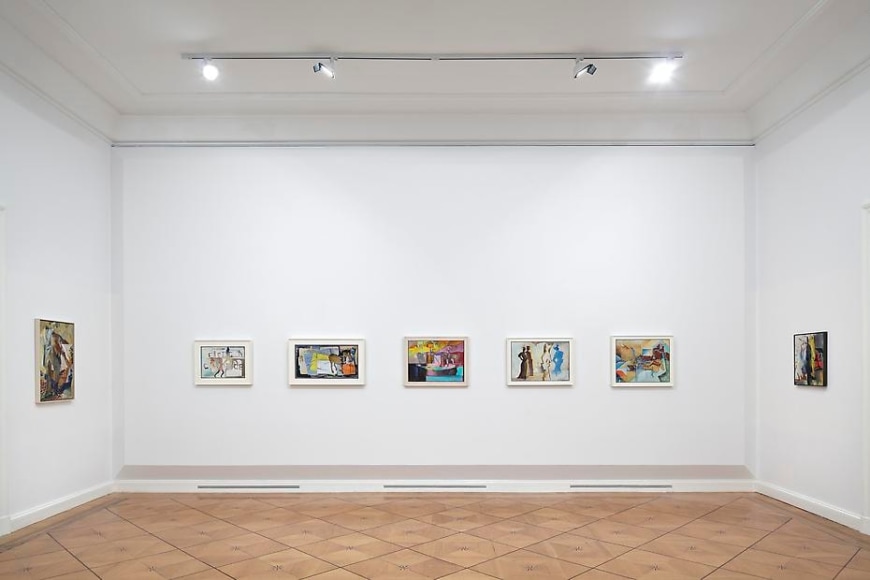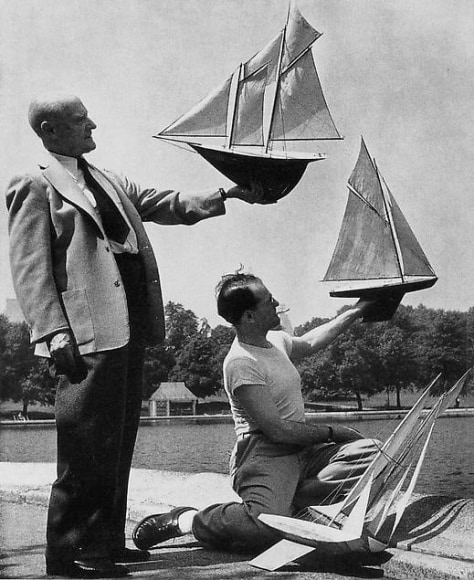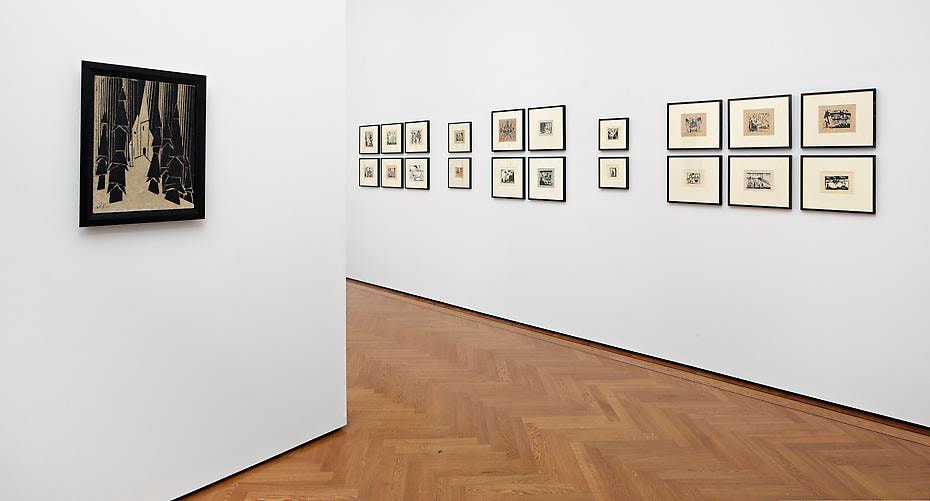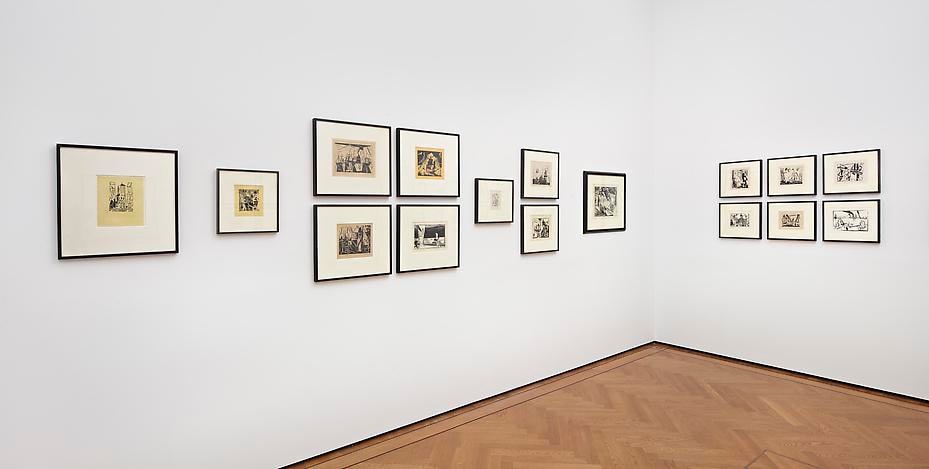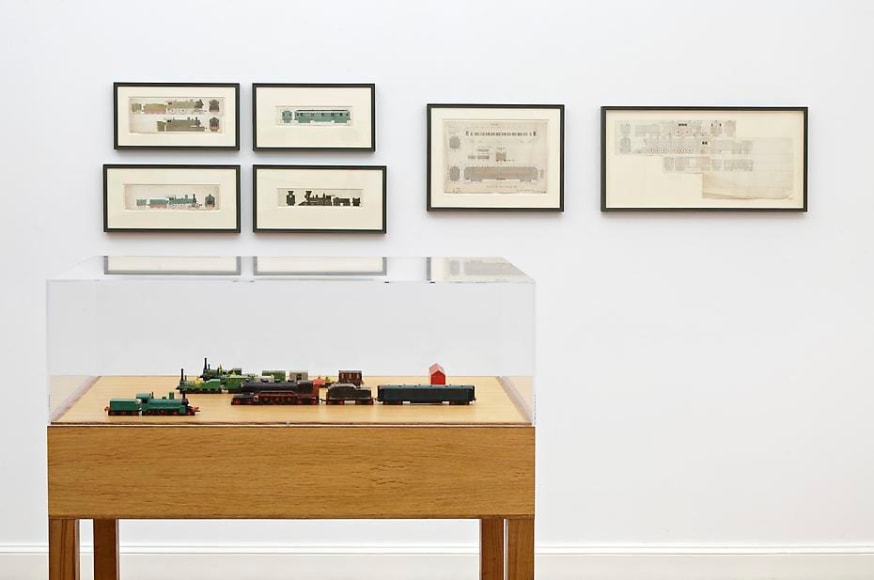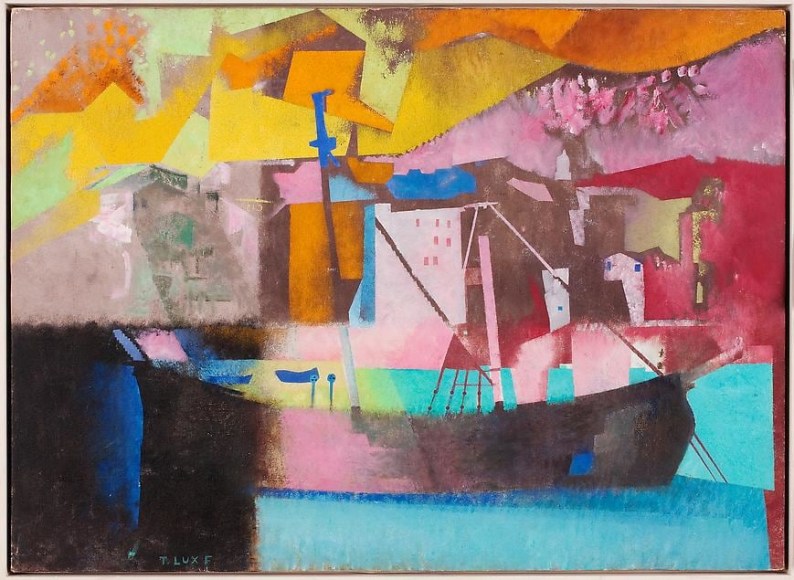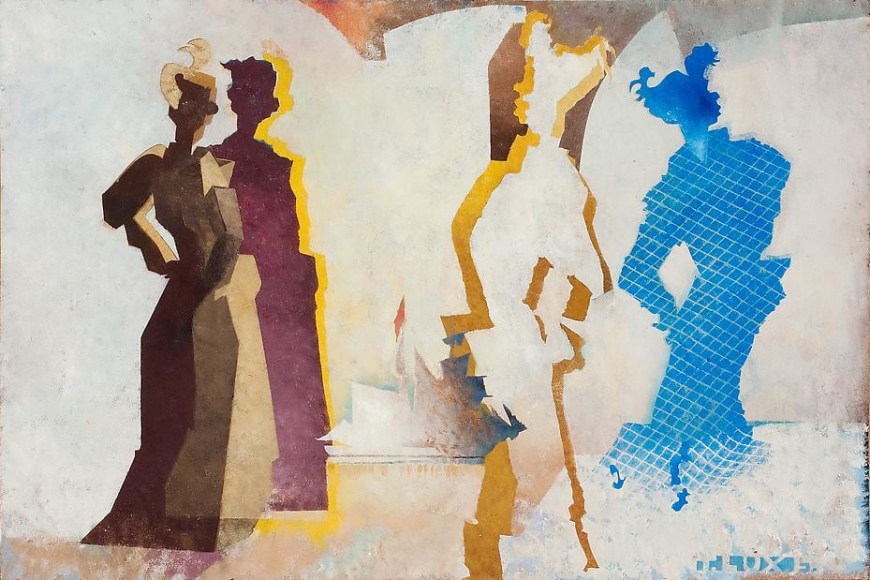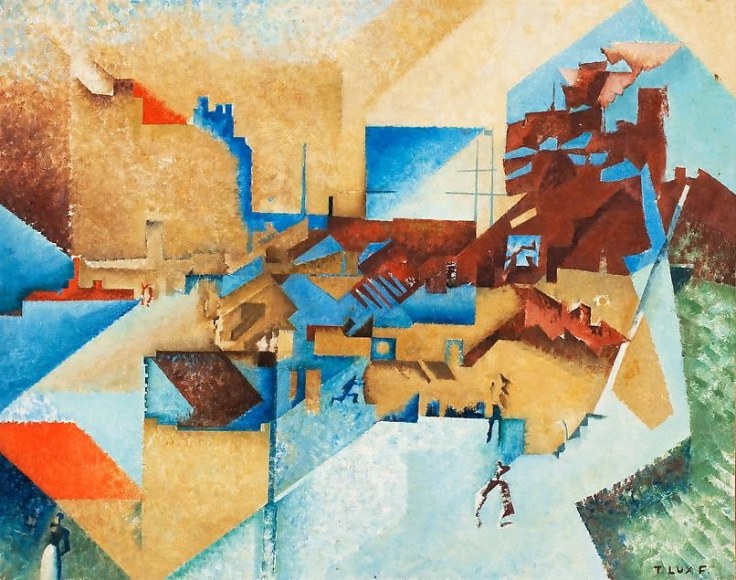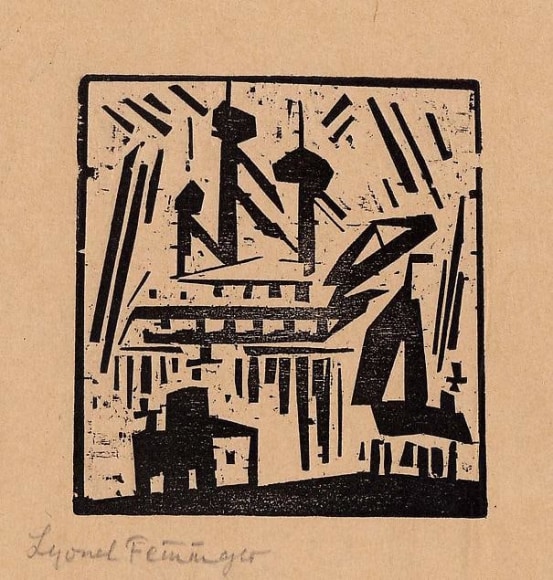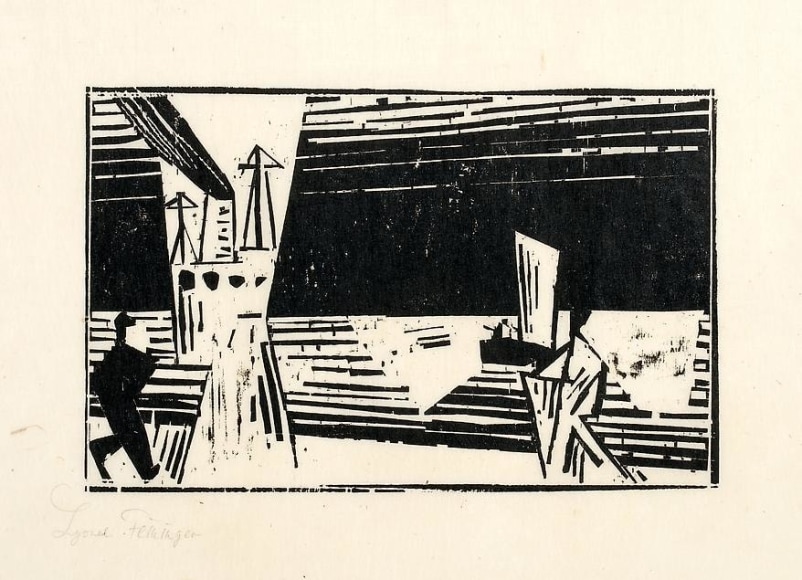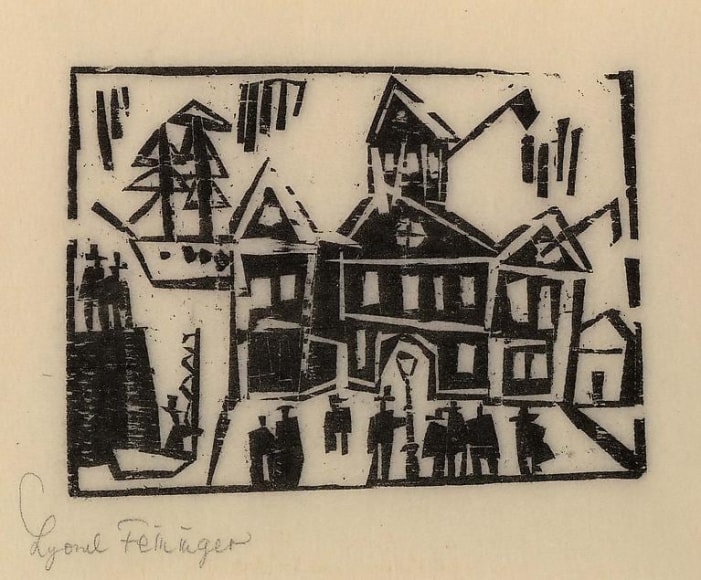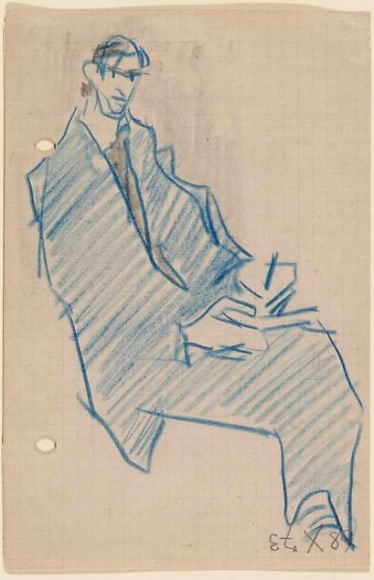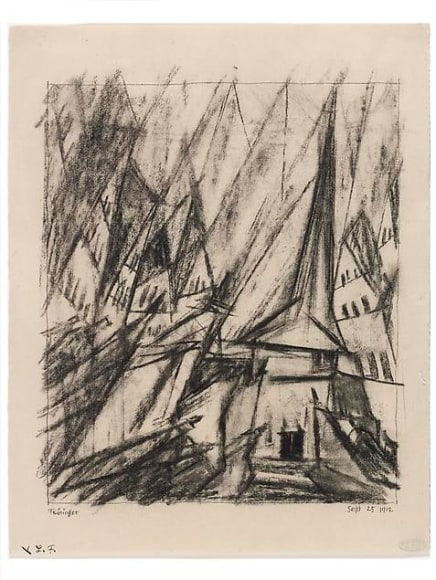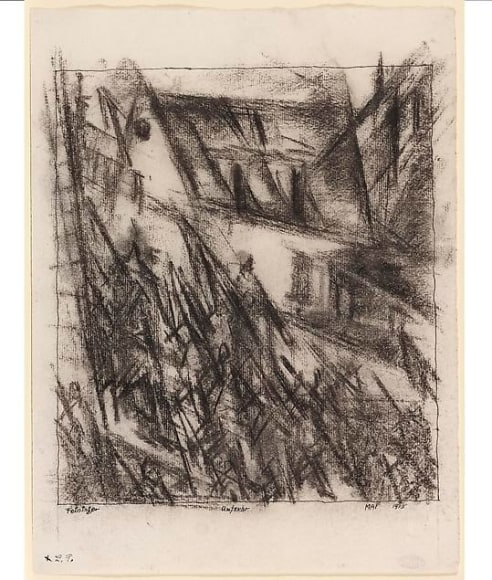Moeller Fine Art Berlin is pleased to announce “Father + Son: Lyonel + T. Lux Feininger”, on view 25 February - 12 April. The exhibition includes twenty watercolors and drawings by Lyonel Feininger (1871-1956) created between 1909 and 1919 from the Estate of Julia Feininger, the artist's wife, and their eldest son, Andreas, as well as sixty woodcuts and an extensive group of figures, houses, and trains in painted wood from Lyonel Feininger's personal collection. Alongside these works, fifteen paintings by Lyonel Feininger's youngest son, T. Lux (1910-2011), are being exhibited in Germany for the first time.
In 1930, Lyonel Feininger wrote to art historian Alois J. Schardt that “a happy Camaraderie in all things” existed between himself and his son Lux. This special relationship began when Lux finished his first painting a year earlier, and declared that he was planning to follow in his father's footsteps. Full of praise and self-criticism, his father professed: “The young man is divine. In his promise lies my joy, as for me, I am a sorrowful being; only what I struggle for suffices in my work." The father's sentiments were echoed by his son: “I seek for the masterpiece, because nothing else will do.”
Although Walter Gropius appointed Lyonel Feininger the first Master of the Bauhaus in Weimar in 1919, it was during the previous decade that he laid the formal groundwork for his art of the Bauhaus years. Moeller Fine Art's exhibition includes twenty watercolors and drawings from this seminal period in the artist's career, notably Aufruhr (1915), Stadt II (1916) and Dorf V (1916), whose chiaroscuro and stark Cubistic elements characterize the bleak War years. This monochromatic strain in Feininger's work reached its height when he began creating wood block prints in 1918, which continued through the mid-twenties. Sixty woodcuts by the artist are included in the presentation, highlighting the varied motifs and effects he achieved with this medium. The alternately linear and whimsical aspect of Feininger's woodcuts can also be traced to the artist's childhood, when he carved model boats and figures in wood, a passion he fostered in his youngest son. Lyonel also explored in 1913 and 1914, when he designed a series of model locomotives and train cars, meant to be manufactured by the Munich toymaker Otto Löwenstein. The project had to be abandoned, however, at the onset of the First World War. Today, only a few prototypes and constructiondrawings survive, most of which can be seen in this exhibition.
T. Lux Feininger was born in 1910 in Berlin-Zehlendorf, where the family lived until 1919, before moving to Weimar. Lux became interested in drawing early in his life, and in 1925 was the first of the Feiningers to experiment with photography. From 1926 to 1929, he studied at the Bauhaus, which had by then moved to Dessau, under Josef Albers, Wassily Kandinsky, Paul Klee, Laszlo Moholy-Nagy and Oskar Schlemmer. He also played banjo and clarinet in the Bauhaus Band. Upon the advice of his friend Clemens Röseler, he started painting in 1929. At the onset of the Second War World in 1936, he moved with his family to New York, where he had his first US solo exhibition at Julian Levy Gallery in 1947. In the following years, he held teaching posts at Harvard University, the School of the Musuem of Fine Arts, Boston and Sarah Lawrence College. Maritime subjects became an important focus for Lux's art, an interest he shared with his father. Seascapes recurr among the fifteen paintings in Moeller Fine Art's exhibition, ranging from detailed, somewhat nostalgic works of the 1930s, Schiff im Golf von Siam (1931), to abstracted, collage-like paintings of the 1980s and 1990s.

